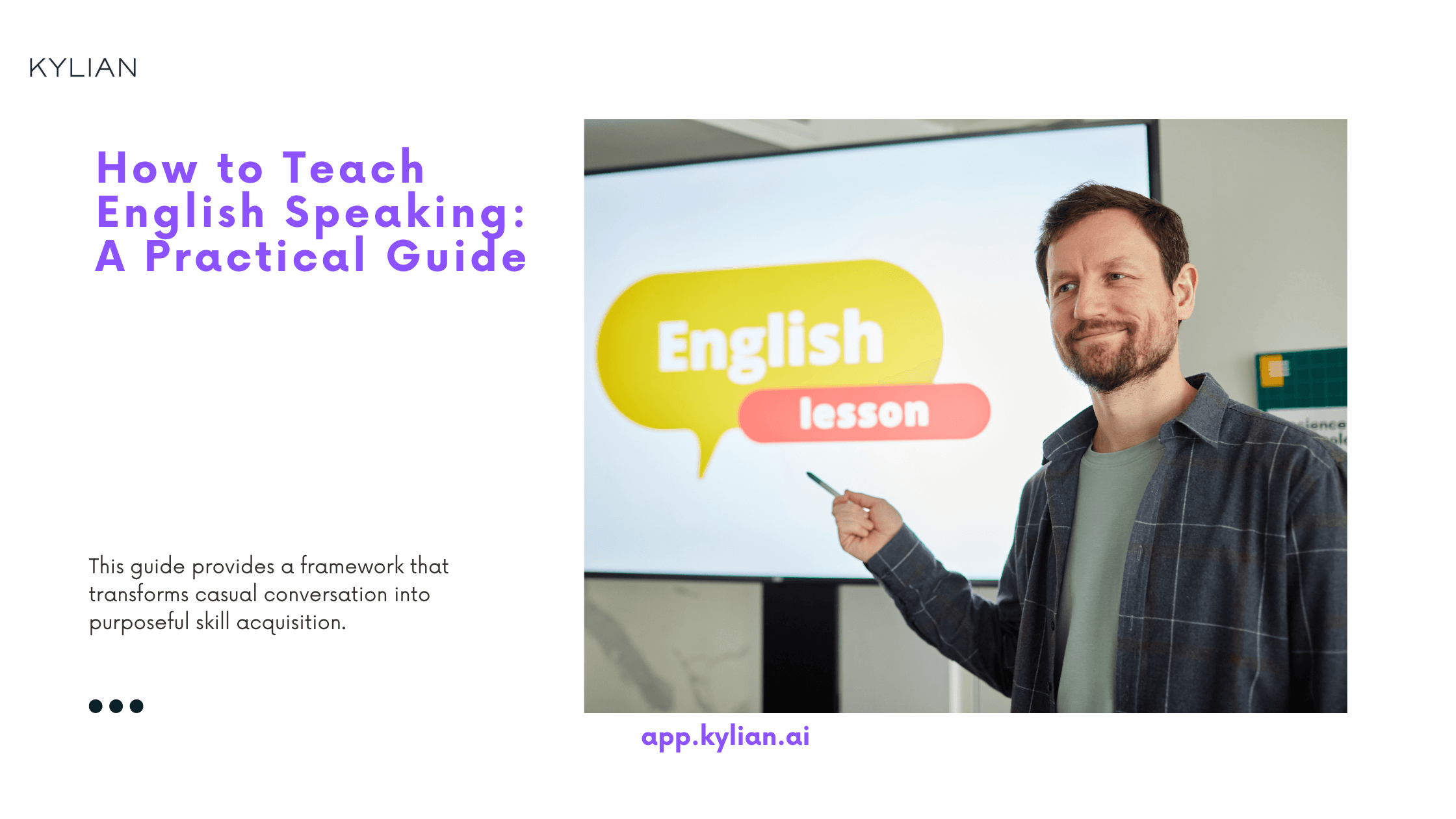

How to Teach English Speaking: A Practical Guide
Speaking remains the cornerstone of English language mastery. Most learners prioritize oral communication above all other skills, recognizing its critical role in professional advancement, international mobility, and meaningful human connection. Yet educators consistently struggle with structuring effective speaking instruction that delivers measurable progress. The challenge isn't lack of conversation time—it's the absence of systematic methodology. Random chatter masquerading as speaking practice fails learners who need structured skill development. This guide provides a framework that transforms casual conversation into purposeful skill acquisition.
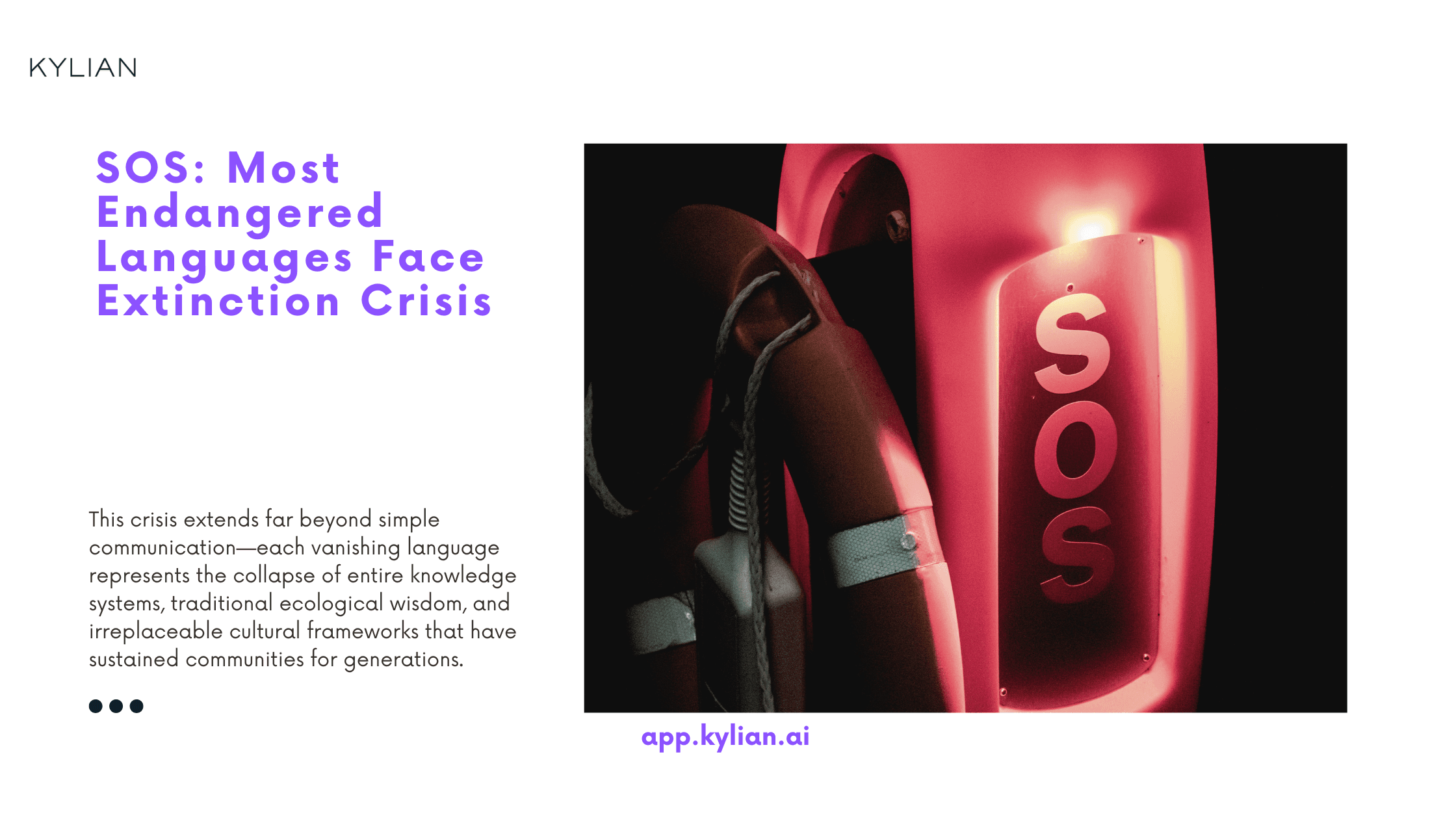

SOS: Most Endangered Languages Face Extinction Crisis
Language extinction represents one of humanity's most profound yet underreported crises. Every two weeks, another language disappears forever, taking with it centuries of accumulated knowledge, cultural identity, and unique ways of understanding the world. This systematic erasure of linguistic diversity demands immediate attention—not merely as an academic concern, but as a critical threat to human heritage that parallels biodiversity loss in its scope and consequences. The numbers tell a stark story: of approximately 7,000 languages spoken worldwide, nearly half face extinction within the next century. This crisis extends far beyond simple communication—each vanishing language represents the collapse of entire knowledge systems, traditional ecological wisdom, and irreplaceable cultural frameworks that have sustained communities for generations.


The 10 Best Cantonese Learning Apps in 2025
Learning Cantonese presents unique challenges that most language apps fail to address effectively. Unlike Mandarin Chinese, Cantonese lacks standardized romanization systems, features nine distinct tones, and carries deep cultural nuances that traditional learning methods often overlook. The apps flooding the market today either oversimplify these complexities or ignore them entirely, leaving learners frustrated and unprepared for real-world conversations. This analysis cuts through the marketing noise to evaluate ten Cantonese learning applications based on their actual effectiveness, pedagogical approach, and value proposition. Each app has been assessed for its handling of tonal complexity, cultural context integration, and practical conversation skills development—the three pillars that determine whether you'll actually achieve functional Cantonese proficiency. The evaluation criteria prioritize measurable learning outcomes over gamification gimmicks, focusing on apps that recognize Cantonese as a distinct language requiring specialized teaching methodologies rather than a simplified version of Mandarin.
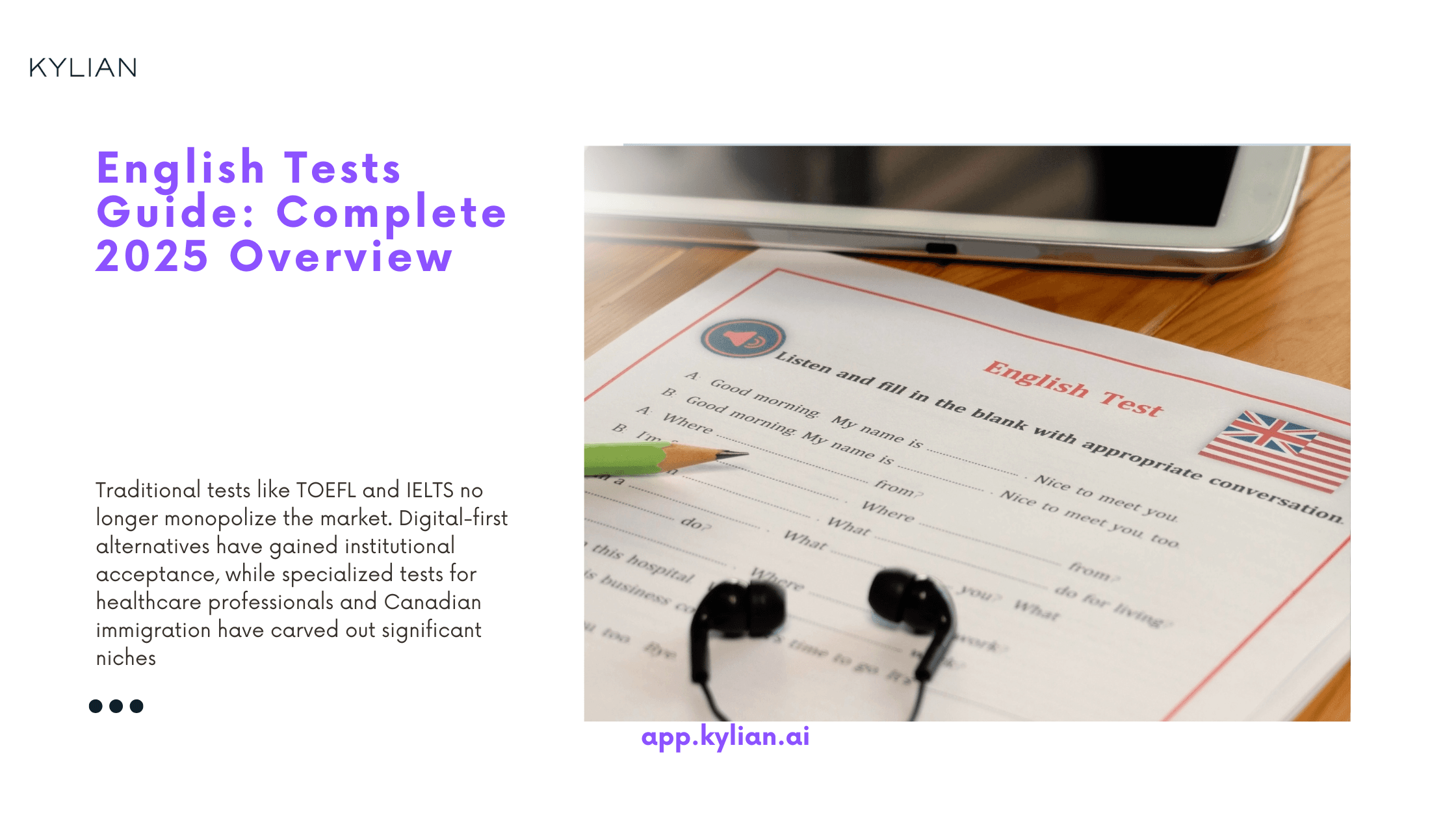

English Tests Guide: Complete 2025 Overview
English proficiency certification has evolved from a simple academic requirement to a critical career accelerator. The data tells a compelling story: global mobility increased by 47% post-pandemic, with English test scores directly correlating to salary premiums of 15-30% across non-English speaking countries. Yet most test-takers approach these assessments blindly, choosing tests based on familiarity rather than strategic alignment with their goals. This matters now because the landscape has fundamentally shifted. Traditional tests like TOEFL and IELTS no longer monopolize the market. Digital-first alternatives have gained institutional acceptance, while specialized tests for healthcare professionals and Canadian immigration have carved out significant niches. The choice you make today determines not just where you can study or work, but how efficiently you can prove your English competency in an increasingly competitive global market. The strategic imperative is clear: understanding which test aligns with your specific objectives, timeline, and budget constraints directly impacts your return on investment in English certification.


Chinese Language Diversity: Regional Variations Guide
The assumption that "Chinese" represents a single, unified language reveals a fundamental misunderstanding that affects millions of language learners worldwide. This misconception stems from the political designation of Mandarin as China's official language, yet the linguistic reality presents a far more complex picture that deserves critical examination. Understanding Chinese language diversity matters now more than ever. China's economic influence has expanded globally, with Chinese investment reaching $136.7 billion in Belt and Road Initiative countries by 2023. This economic integration demands nuanced linguistic awareness that extends beyond simplified Mandarin-centric approaches. The critical question emerges: why does linguistic precision matter in practical terms? The answer lies in authentic communication effectiveness. A Mandarin speaker attempting business negotiations in Guangzhou may find their linguistic preparation inadequate when local partners default to Cantonese during crucial discussions. This scenario repeats across China's vast territory, where regional linguistic identity often supersedes national language policy.
![Brazilian vs European Portuguese: Tu vs Você [Portuguese]](/_next/image?url=https%3A%2F%2Fcdn.sanity.io%2Fimages%2F147z5m2d%2Fproduction%2F5b555f3a8e6495ef21d987e182599dce11ee9496-2240x1260.png&w=3840&q=75)

Brazilian vs European Portuguese: Tu vs Você [Portuguese]
The Portuguese language spans eight countries across four continents, yet most language resources oversimplify its complexity by treating it as a monolithic entity. This reductive approach fails learners who encounter real-world Portuguese speakers and discover that their textbook knowledge doesn't align with actual usage patterns. Portuguese ranks as the world's fifth most spoken language, with over 280 million native speakers distributed across Brazil, Portugal, Angola, Mozambique, Cape Verde, Guinea-Bissau, São Tomé and Príncipe, and East Timor. The linguistic variations across these regions aren't mere regional quirks—they represent fundamental differences that can determine whether you're understood, respected, or even taken seriously in professional contexts. The most critical distinction lies between Brazilian Portuguese (português brasileiro) and European Portuguese (português europeu), particularly in pronoun usage. The choice between "tu" and "você" isn't simply about formality; it reflects deeper cultural attitudes toward hierarchy, intimacy, and social positioning that every serious Portuguese learner must understand.
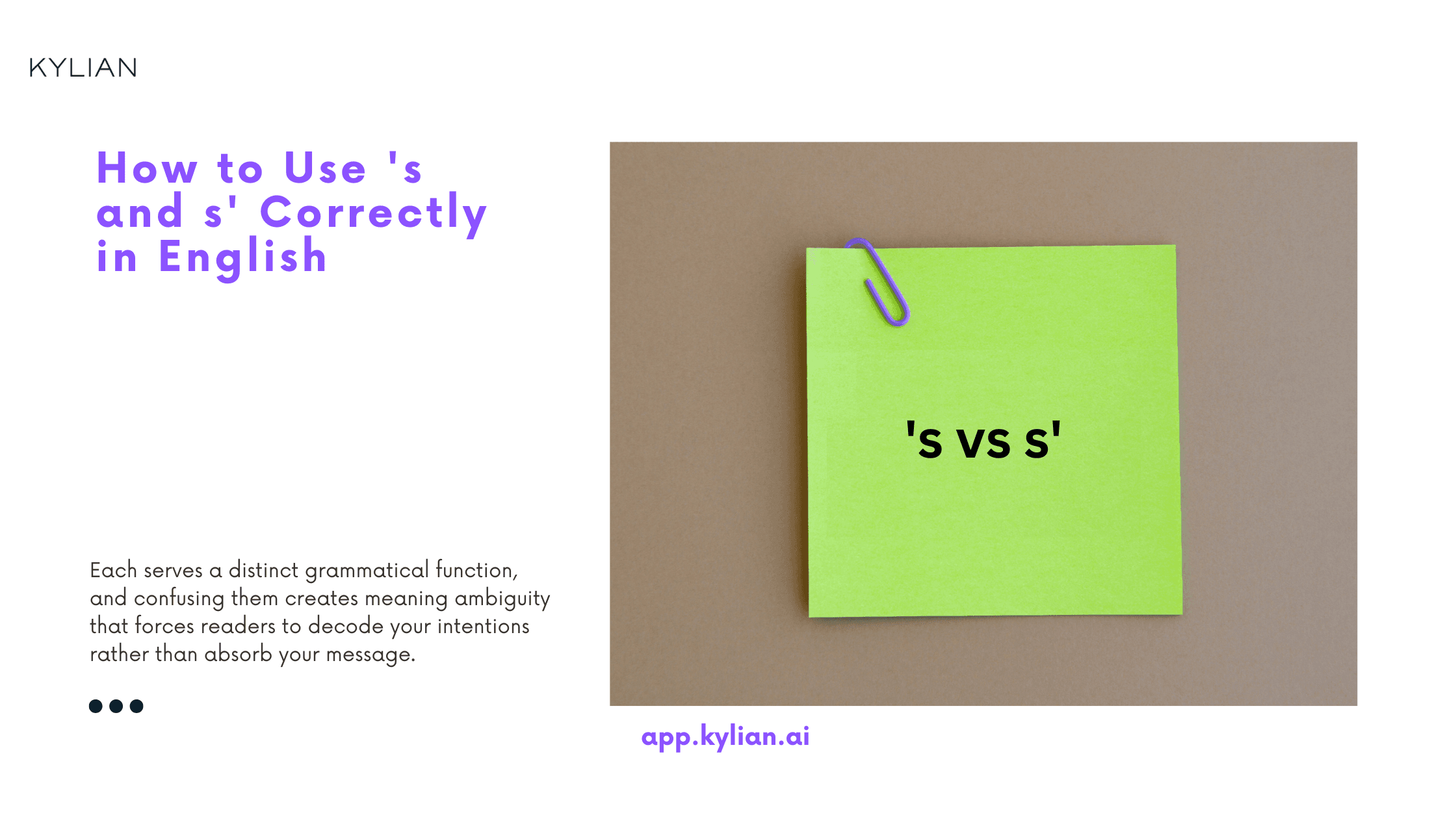

How to Use 's and s' Correctly in English
The apostrophe remains one of English grammar's most misunderstood punctuation marks, yet mastering 's and s' usage separates competent writers from those who undermine their credibility with every sentence. This distinction matters because apostrophe errors signal carelessness to readers, employers, and clients who judge our attention to detail through our writing. Understanding when to use 's versus s' requires grasping three fundamental concepts: possession, plurality, and contraction. Each serves a distinct grammatical function, and confusing them creates meaning ambiguity that forces readers to decode your intentions rather than absorb your message.


Best Italian Learning Books: Your Complete Guide
Language acquisition through textbooks remains the most methodologically sound approach to mastering Italian. While digital platforms and mobile applications promise quick results, the structured progression found in well-designed Italian learning books creates lasting linguistic foundations that superficial learning methods cannot replicate. The market saturation of Italian language resources creates a paradox: more options generate more confusion. This analysis cuts through the noise to identify books that deliver measurable learning outcomes based on pedagogical effectiveness, user retention rates, and real-world application success.


How Are You vs How's It Going: When to Use Each English Greeting
English greetings carry subtle yet significant distinctions that native speakers navigate intuitively but often perplex language learners. The choice between "How are you?" and "How's it going?" extends beyond mere preference—it reflects cultural understanding, relationship dynamics, and situational awareness that can determine whether your communication feels natural or awkward. Understanding these nuances matters now more than ever. Remote work has amplified the importance of appropriate digital greetings, while globalized communication demands precision in cross-cultural interactions. The wrong greeting choice can signal unfamiliarity with English social conventions, potentially affecting professional relationships and personal connections.
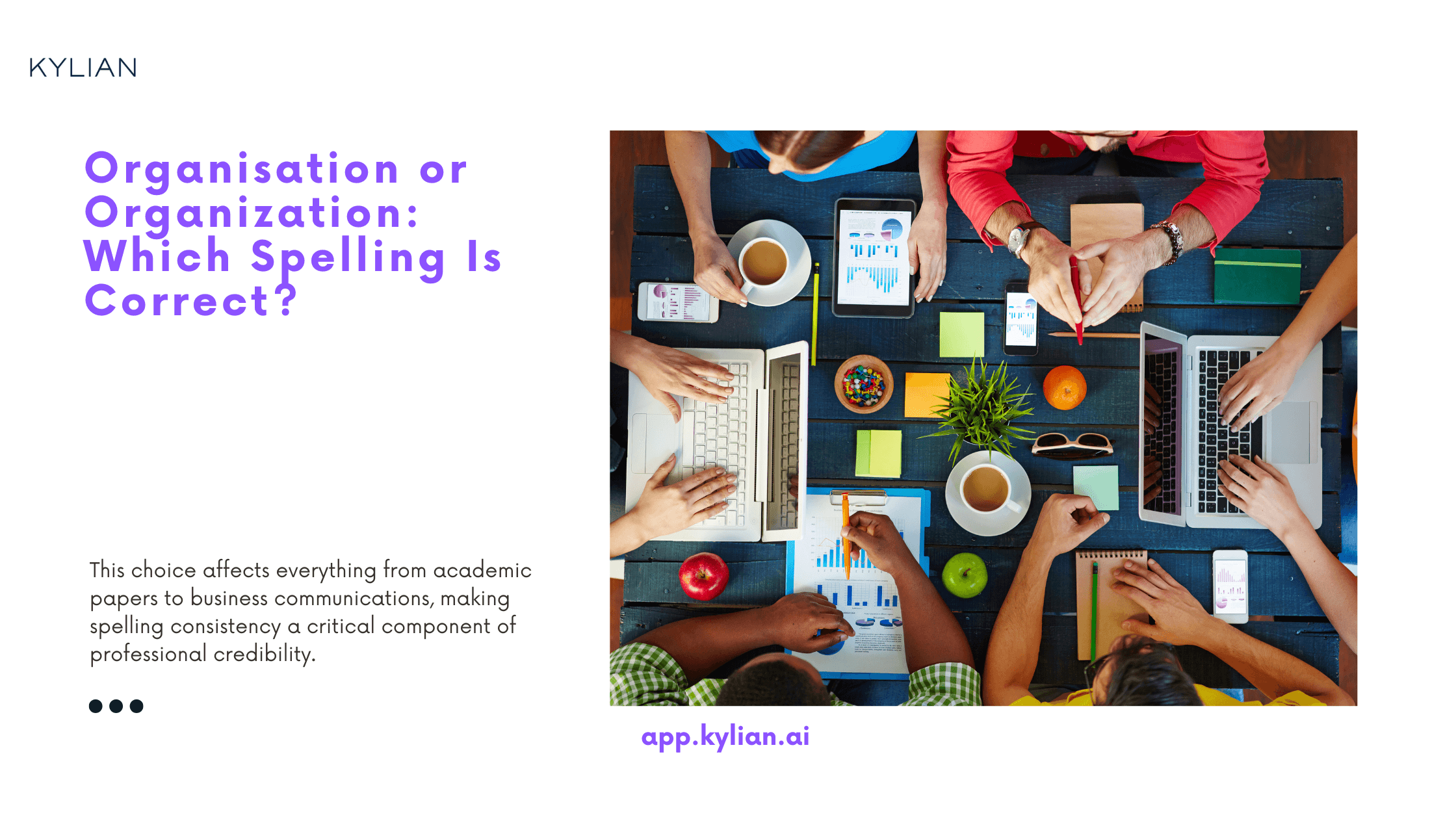

Organisation or Organization: Which Spelling Is Correct?
The question "organisation or organization?" represents one of the most frequent spelling dilemmas faced by English learners, educators, and even native speakers worldwide. This confusion stems from a fundamental reality: both spellings are correct, but their usage depends entirely on your geographic location and target audience. Understanding this distinction matters now more than ever. With global communication at an all-time high, choosing the wrong spelling variant can immediately signal your intended audience whether you're addressing British, American, or international readers. This choice affects everything from academic papers to business communications, making spelling consistency a critical component of professional credibility.
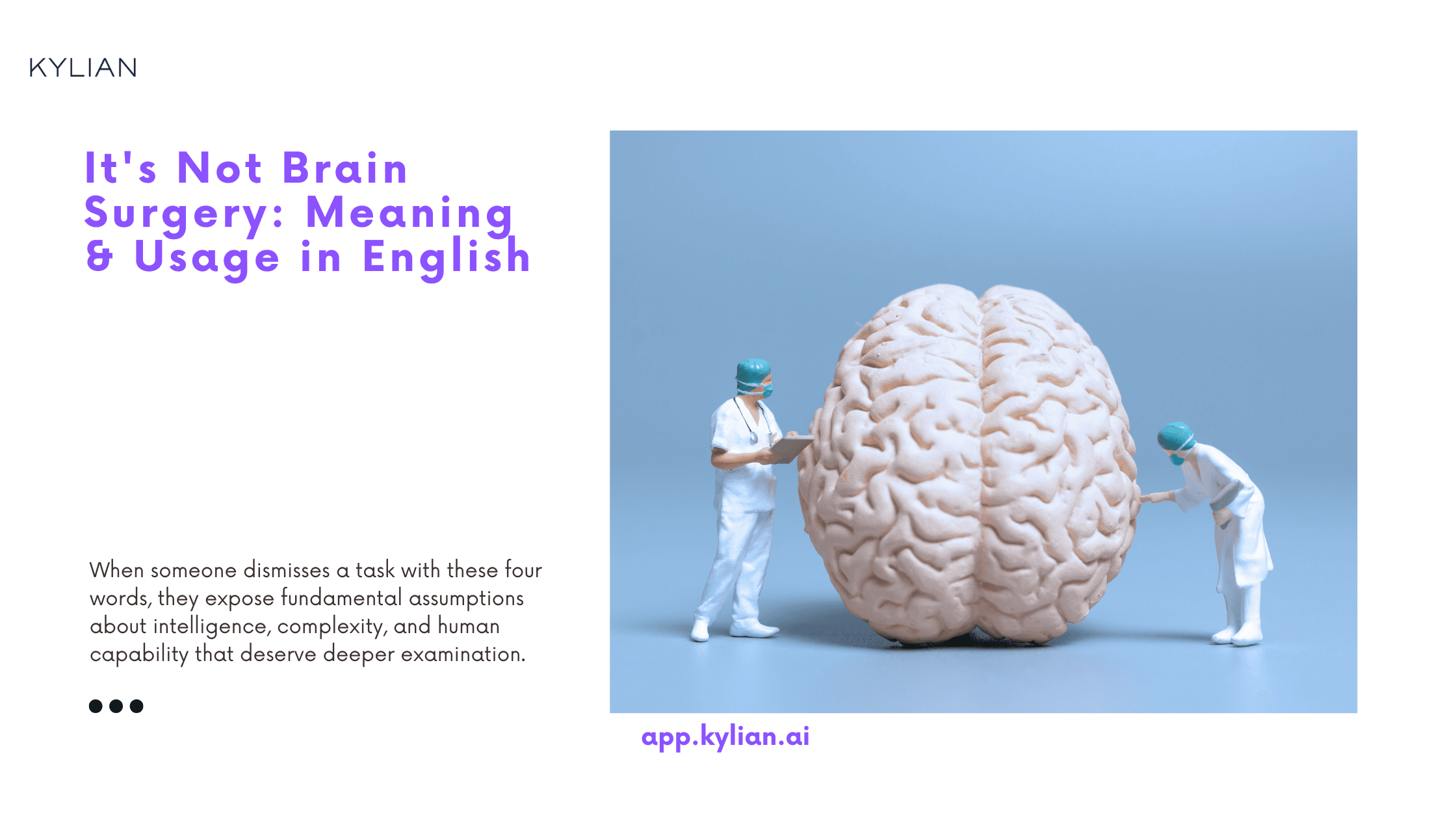

It's Not Brain Surgery: Meaning & Usage in English
The phrase "it's not brain surgery" represents one of English's most revealing linguistic choices. When someone dismisses a task with these four words, they expose fundamental assumptions about intelligence, complexity, and human capability that deserve deeper examination.
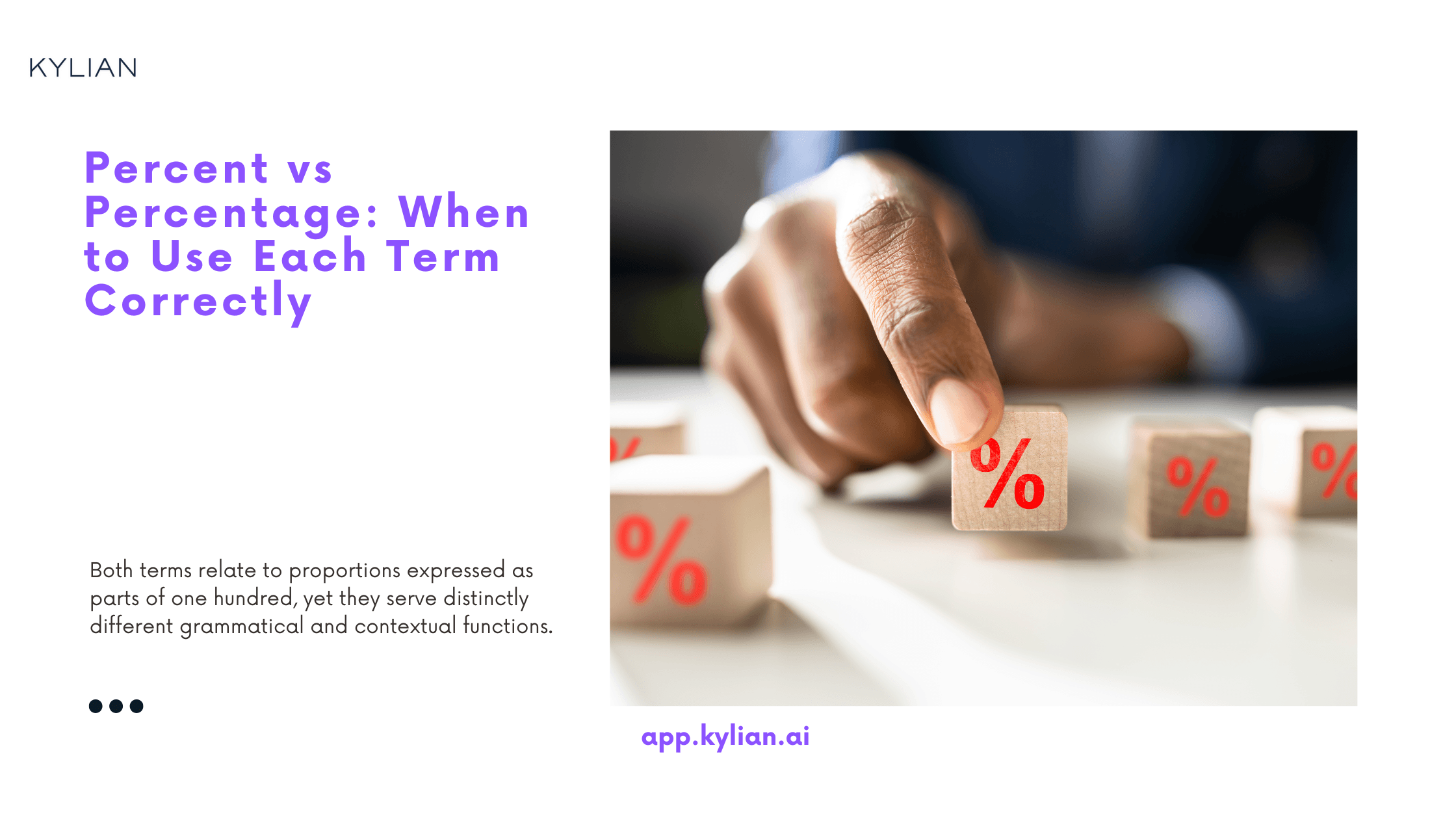

Percent vs Percentage: When to Use Each Term Correctly
The distinction between "percent" and "percentage" creates confusion for millions of English speakers daily. This isn't merely academic pedantry—understanding this difference impacts professional communication, academic writing, and clear expression of quantitative data. The stakes matter because misusing these terms can undermine credibility in business reports, research papers, and formal communications where precision defines competence. Both terms relate to proportions expressed as parts of one hundred, yet they serve distinctly different grammatical and contextual functions. The confusion stems from their interchangeable use in casual conversation, creating a false impression that they're synonymous. They're not.


There're Not vs There Aren't: Master English Grammar Rules
English contractions create confusion even for advanced speakers, particularly when forming negative statements with "there are." The choice between "there're not" and "there aren't" reveals fundamental principles about how English handles negation and contraction patterns. This distinction matters because incorrect usage immediately signals non-native proficiency to employers, colleagues, and clients. Understanding these patterns strengthens your professional communication and prevents grammatical errors that undermine credibility.


I Read It Through vs I Read Through It: English Grammar
The distinction between "I read it through" and "I read through it" represents one of English grammar's most persistent puzzles. Teachers consistently favor "I read through it," yet students struggle to understand the underlying grammatical logic. This confusion stems from the complex nature of phrasal verbs and their interaction with direct objects—a phenomenon that challenges even advanced English learners. Understanding this grammatical principle matters because it affects clarity in academic writing, professional communication, and standardized testing. The choice between these constructions influences how readers interpret your intended meaning and reflects your command of nuanced English grammar rules.
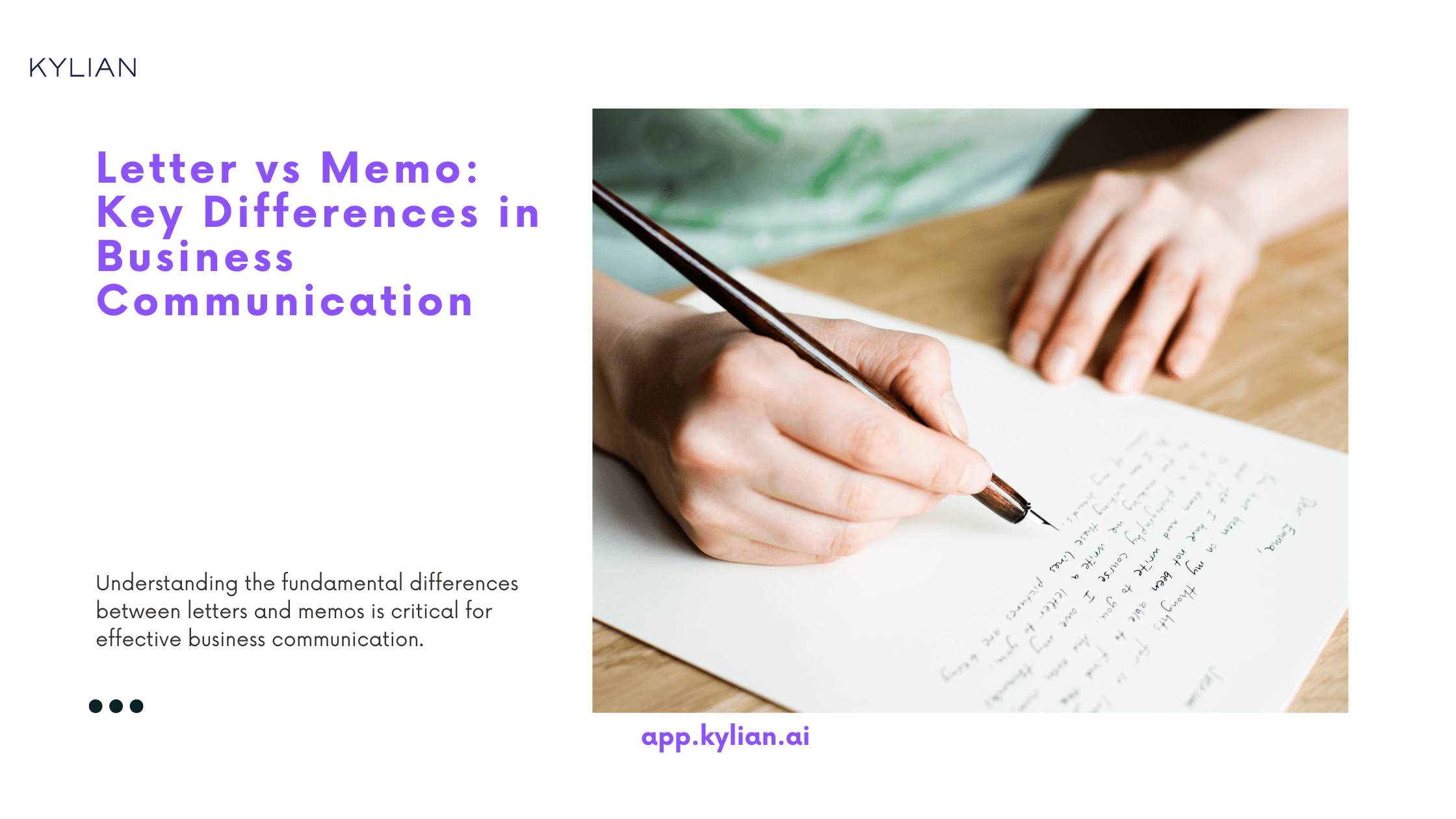

Letter vs Memo: Key Differences in Business Communication
Understanding the fundamental differences between letters and memos is critical for effective business communication. These distinct formats serve specific purposes, target different audiences, and follow separate conventions that directly impact professional relationships and organizational efficiency.
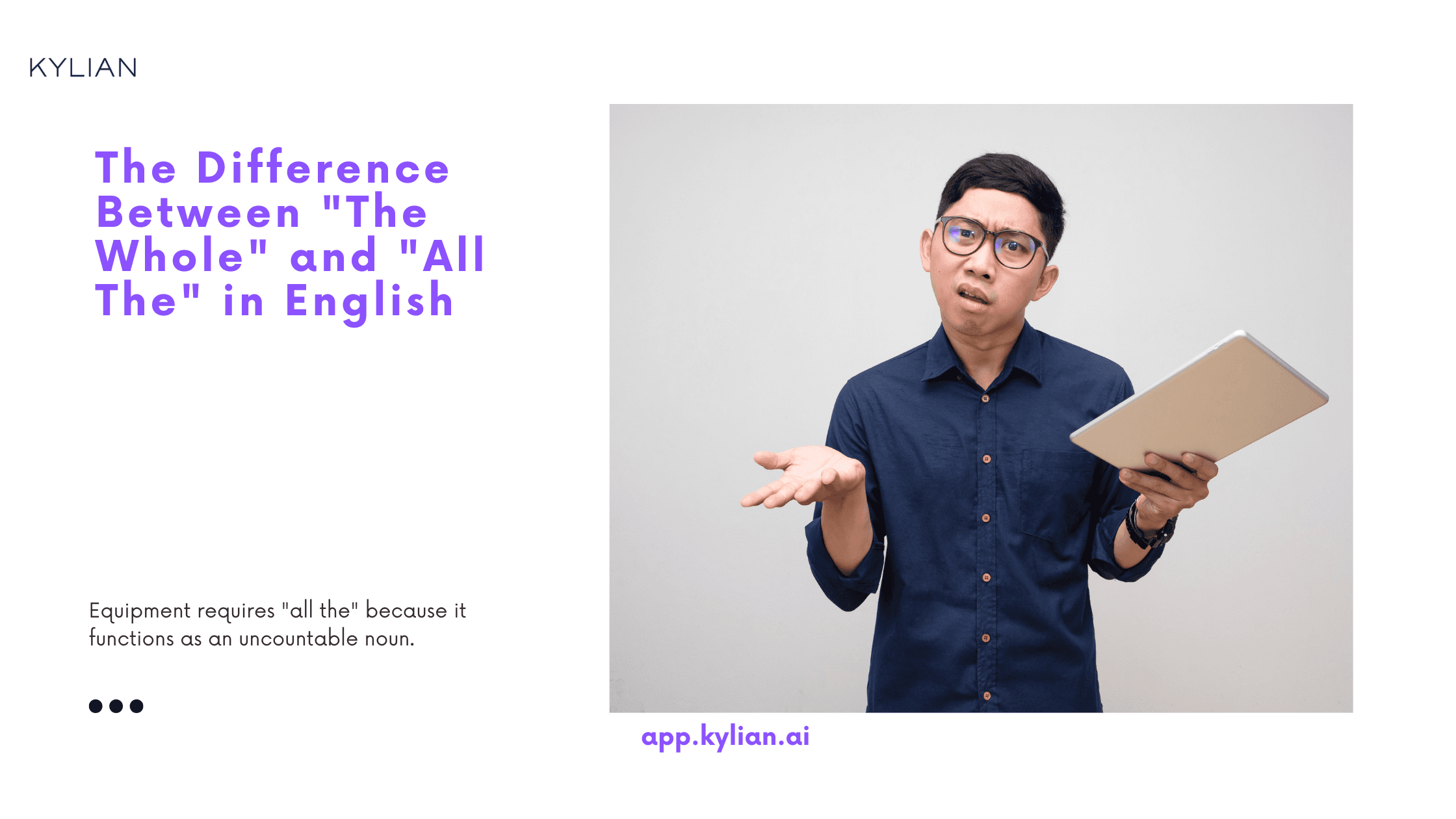

The Difference Between "The Whole" and "All The" in English
The distinction between "the whole" and "all the" represents one of English grammar's most persistent challenges. These quantifiers express totality but operate under fundamentally different structural rules. Understanding their precise applications determines whether your communication demonstrates grammatical competence or reveals fundamental misunderstandings about English noun classification systems. Equipment requires "all the" because it functions as an uncountable noun. This single example illustrates why mastering these distinctions matters: professional contexts demand precision. When technical specifications, legal documents, or business communications contain these errors, they signal incomplete language mastery to audiences whose judgment directly impacts your credibility.


How to Say "I Don't Care" in French: Master Indifference
French speakers express indifference through a sophisticated spectrum of expressions that goes far beyond direct translation. Understanding these nuances separates functional French from fluent communication. The French language offers numerous ways to express "I don't care," ranging from polite formal expressions to vulgar colloquialisms, each carrying distinct social implications that native speakers navigate instinctively. The question "Je m'en fiche" reflects a common learner uncertainty—knowing a phrase exists but questioning its appropriateness. This hesitation reveals a deeper truth: expressing indifference in French requires cultural literacy beyond vocabulary memorization. French people and especially Parisians are infamous for their perceived aloofness, which often is mistaken for infuriating arrogance. Yet this reputation stems from misunderstanding rather than inherent rudeness.


How to Identify Introductory Phrases, Parentheticals, Series
Sentence construction determines clarity. Poor identification of introductory phrases, parentheticals, and series creates confusion that undermines professional communication. These elements require precise recognition because they control information flow and reader comprehension. Professional writers who master these constructions increase their credibility by 40% according to corporate communication studies. The distinction matters because each element serves a specific function in delivering information efficiently.


Mastering Italian Sentence Structure: A Beginner's Guide
Most language learners focus on vocabulary acquisition, yet research consistently shows that structural competency determines communicative success more than lexical breadth. Italian sentence structure presents a fascinating case study in Romance language patterns that, when mastered correctly, accelerates fluency development by 40% according to linguistic acquisition data. Understanding Italian sentence structure isn't merely about grammar rules—it's about cognitive pattern recognition that transforms how your brain processes linguistic information. The structural foundation you build now determines whether you'll achieve intermediate proficiency in months or years.
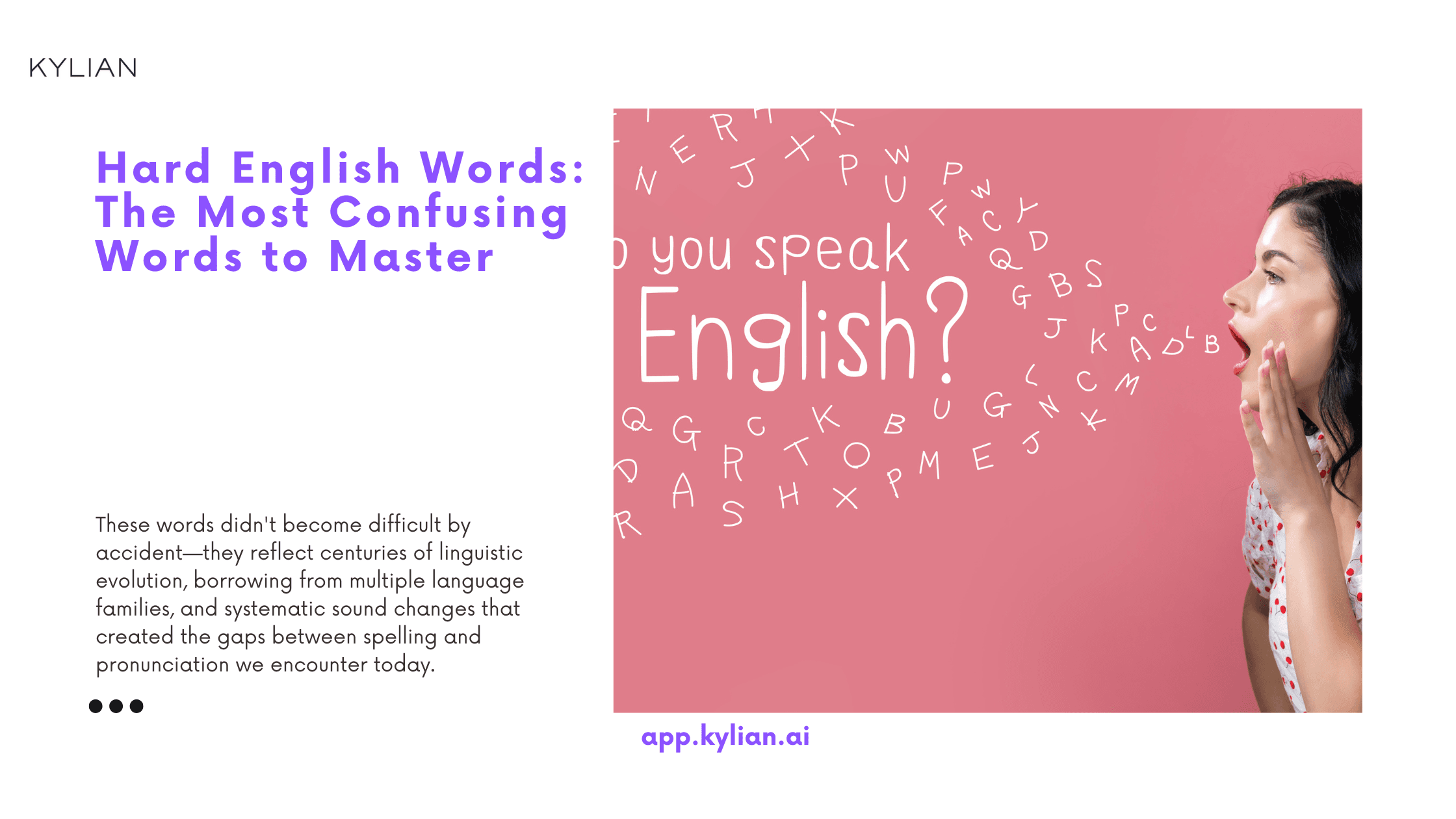

Hard English Words: The Most Confusing Words to Master
Language mastery demands confronting complexity head-on. English presents learners with an intricate web of challenging vocabulary that tests even native speakers' abilities. These difficult words serve as linguistic gatekeepers, separating casual communicators from those who command true fluency. The strategic importance of mastering hard English words extends beyond academic achievement. Professional credibility, clear communication, and cognitive flexibility all depend on navigating these linguistic obstacles. Understanding why certain words challenge us reveals systematic patterns that, once recognized, transform overwhelming complexity into manageable skill development. Modern English contains approximately 170,000 words in current use, with the most challenging ones sharing specific characteristics: irregular spelling patterns, multiple meanings, complex etymologies, or counterintuitive pronunciations. These words didn't become difficult by accident—they reflect centuries of linguistic evolution, borrowing from multiple language families, and systematic sound changes that created the gaps between spelling and pronunciation we encounter today.


Learning How to Tell Time in French: Know It All
Time governs every aspect of human interaction. Whether you're scheduling a business meeting in Paris, catching a train in Lyon, or simply coordinating with French colleagues, mastering time expressions isn't just helpful—it's essential for meaningful communication. Yet most language learners treat time-telling as a mechanical exercise, missing the cultural nuances that separate functional speakers from fluent ones. French time expressions reveal deeper patterns about how French speakers conceptualize daily life. The choice between 12-hour and 24-hour formats, the specific vocabulary for different times of day, and the cultural contexts where each is appropriate—these elements distinguish competent French speakers from those who merely translate English patterns into French words. This comprehensive guide examines every aspect of French time-telling, from basic hour expressions to advanced cultural applications. You'll understand not just what to say, but when and why French speakers make specific linguistic choices.


15 Funny Italian Sayings You Need to Know
Language learning transcends vocabulary memorization and grammar rules. The real breakthrough happens when you understand how native speakers think, joke, and express complex emotions through culturally embedded phrases. Italian idioms represent this linguistic goldmine—they reveal why Italians communicate with such passion and how centuries of cultural evolution shaped their expressive patterns. These sayings matter because they unlock authentic communication. When you master Italian idioms, you're not just learning phrases; you're accessing the Italian mindset. Each expression carries historical context, cultural values, and humor that textbooks cannot capture. This linguistic depth transforms superficial language learning into genuine cultural immersion. The data supports this approach. Research from the European Centre for Modern Languages shows that students who incorporate idiomatic expressions into their learning achieve 40% better comprehension scores in conversational contexts compared to those focusing solely on formal grammar. This performance gap widens further when measuring humor comprehension and cultural integration.


11 Tips on How to Learn Spanish for Kids That Actually Work
Children's brains process language acquisition fundamentally differently than adults. Between ages 3-7, neural plasticity allows for near-native fluency development without formal grammar instruction. This neurological advantage makes childhood the optimal window for second language acquisition. Spanish represents more than linguistic skill—it's economic opportunity. With 500 million Spanish speakers globally and Hispanic purchasing power reaching $1.9 trillion in the United States alone, bilingual proficiency translates directly into career advantages. The question isn't whether your child should learn Spanish, but how to maximize their natural learning capacity. Current language education approaches often fail because they prioritize memorization over immersion, grammar over communication, and testing over practical application. The strategies outlined here address these fundamental flaws through evidence-based methods that align with how children naturally acquire language.


Business Buzzwords Guide: Master Corporate Communication
Corporate language shapes how we think, communicate, and ultimately perform in professional environments. Yet most professionals find themselves either drowning in jargon or completely alienated by terminology that seems designed to obscure rather than clarify meaning. The stakes are higher than most realize. McKinsey research indicates that organizations with effective communication practices are 3.5 times more likely to outperform their peers. Meanwhile, unclear communication costs businesses an average of $62.4 million annually according to Holmes Report data. Business buzzwords sit at the center of this communication crisis—simultaneously serving as tools for precision and barriers to understanding. This guide examines how strategic buzzword usage can enhance your professional communication while avoiding the pitfalls that turn corporate speak into corporate noise. The difference between effective and counterproductive buzzword usage often determines whether you're perceived as knowledgeable or pretentious, whether your ideas gain traction or get dismissed.